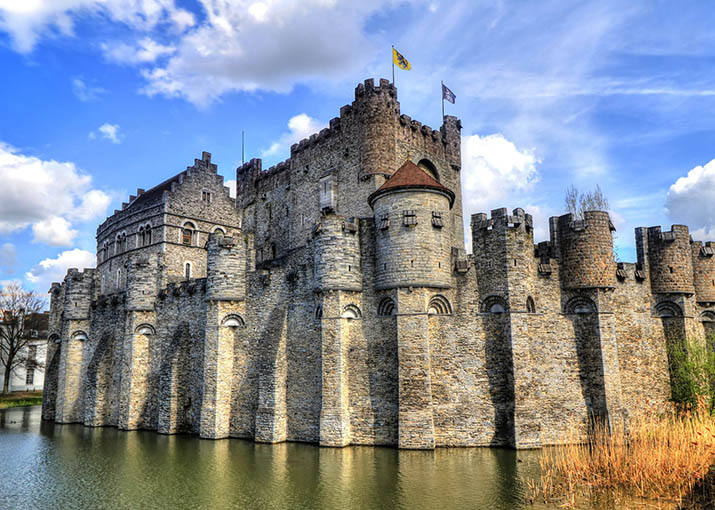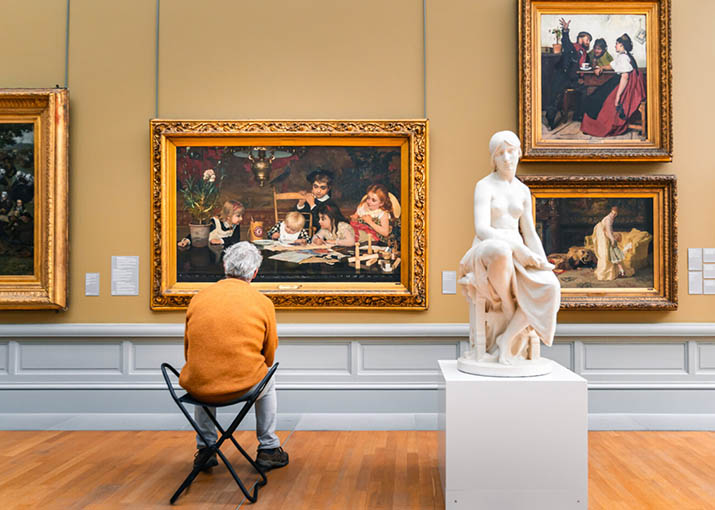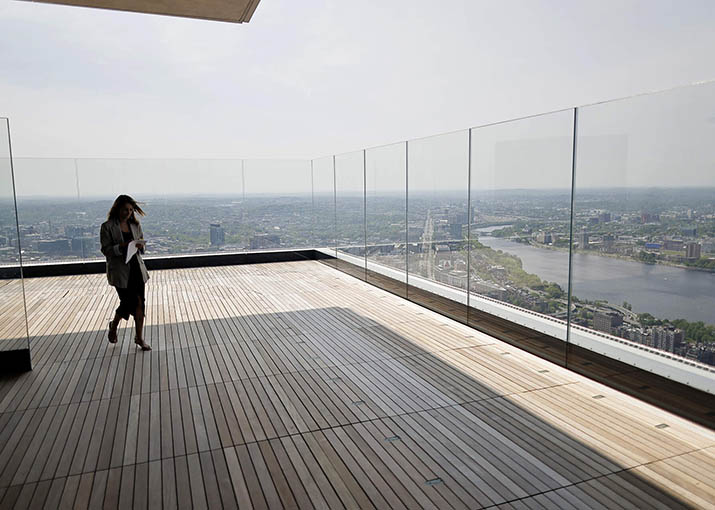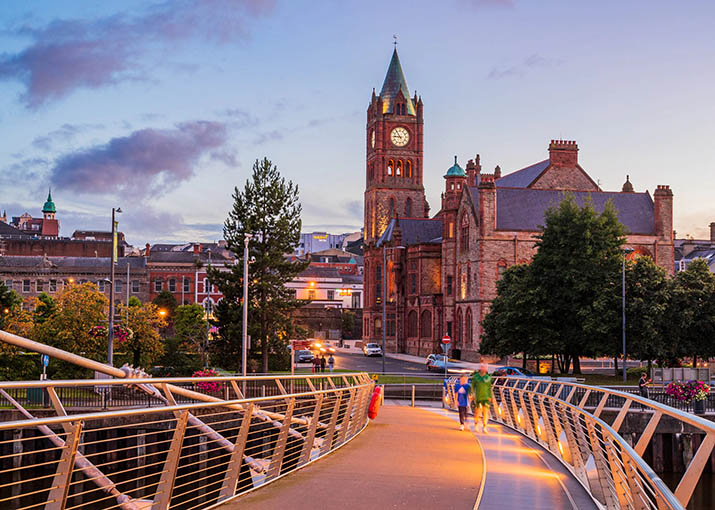Ghent, Belgium. This charming city, with its perfect blend of old-world charm and modern vibrancy, is an ideal destination for a weekend getaway. In this guide, I’ll take you through the must-see attractions that make Ghent an unforgettable place to explore.
1. Millionaires’ District and Gent-Sint-Pieters Station
The Millionaires’ District (Millionaires’ Quarter) and Gent-Sint-Pieters Station are two architectural gems that showcase Ghent’s historical grandeur. The Millionaires’ District is renowned for its stunning 19th and early 20th-century mansions, reflecting the opulence of a bygone era. As you stroll through this area, you’ll encounter beautiful facades, ornate details, and lush gardens that transport you back in time.
Gent-Sint-Pieters Station, with its striking blend of neo-Renaissance and classical architecture, stands as one of Belgium’s most beautiful train stations. The station’s grand hall, adorned with sculptures, arches, and intricate decorations, is a sight to behold. Whether you’re admiring the station’s architecture from the lobby or taking in the views from the platforms, the station’s elegance and historical significance are truly impressive.
2. Boat Tour of Ghent
One of the best ways to experience Ghent’s charm is by taking a boat tour along the city’s picturesque canals. This relaxing journey offers a unique perspective on the city’s beautiful architecture and landmarks. As you glide along the waterways, the boat’s guide will share fascinating stories and historical insights about the city. On a warm day, the gentle breeze and sparkling water make the boat tour an enchanting experience that enhances your appreciation of Ghent’s scenic beauty.
3. Gravensteen (Castle of the Counts)
Historical Significance
Gravensteen Castle was built in the early 12th century by Philip of Alsace, the Count of Flanders. Its construction was a strategic move to solidify his power and to act as a defensive stronghold against both internal and external threats. The castle served as the residence of the counts of Flanders, as well as a center of administrative and judicial activities. Over the centuries, it has witnessed significant historical events, from its use as a royal residence to its role as a prison and a military barracks.
Architectural Marvel
The architecture of Gravensteen Castle is a striking example of medieval military design. As you approach the castle, the imposing stone walls, crenellated battlements, and towering turrets immediately capture your attention. The fortress is built from grey sandstone, giving it a solid and formidable appearance. The castle’s layout includes:
- Defensive Walls: The castle is surrounded by thick defensive walls that were designed to withstand sieges and attacks. Walking along these walls offers panoramic views of Ghent and the surrounding area, providing insight into the castle’s strategic significance.
- The Keep: At the heart of the castle is the keep, a central stronghold that served as the residence of the counts and the main defense structure. The keep is surrounded by a deep moat, which was an additional layer of defense against intruders.
- Towers: The castle features several towers, each with its own historical function. Some towers were used for surveillance and defense, while others served as living quarters or storage areas. Climbing to the top of these towers offers a glimpse into the castle’s historical layout and a spectacular view of the city.
Exploring the Castle

Walking through Gravensteen is like stepping back in time. The interior of the castle is meticulously preserved, allowing visitors to experience medieval life firsthand. Key areas to explore include:
- The Great Hall: The Great Hall, with its high ceilings and grand fireplace, was the center of social and political life in the castle. It’s where feasts, meetings, and ceremonies took place. The hall’s ambiance, with its medieval décor and furnishings, provides a sense of the opulence and grandeur of the past.
- The Dungeon: One of the most intriguing parts of the castle is the dungeon, which was used as a prison and torture chamber. The grim atmosphere and the historical accounts of the punishments meted out here offer a sobering reminder of the harshness of medieval justice.
- The Armory: The castle’s armory houses an impressive collection of medieval weapons and armor. This exhibit includes swords, shields, crossbows, and suits of armor from various periods. For history enthusiasts, it’s a fascinating opportunity to see the tools of warfare and the craftsmanship of medieval weaponry up close.
- The Museum: In addition to the armory, Gravensteen Castle also hosts a museum dedicated to medieval life. Exhibits cover a range of topics, including daily life in the castle, the role of the counts of Flanders, and the history of the fortress itself. Interactive displays and detailed information make the museum an engaging experience for visitors of all ages.
Practical Information
- Location: Gravensteen Castle is centrally located in Ghent, making it easily accessible from various parts of the city. It is situated along the river Lys, adding to its picturesque setting.
- Opening Hours: The castle is open to visitors daily, with varying hours depending on the season. It’s advisable to check the official website for the most up-to-date information on opening times and ticket prices.
- Tickets: Admission fees are reasonable, with discounts available for children, students, and groups. There are also guided tours available for a more in-depth exploration of the castle’s history and architecture.
- Tips for Visitors: Wear comfortable walking shoes as the castle’s terrain can be uneven. Consider visiting during off-peak hours to avoid crowds and have a more leisurely experience. Don’t forget to bring a camera to capture the stunning views and the castle’s architectural details.
Gravensteen Castle is a captivating destination for anyone interested in medieval history and architecture. Its well-preserved structures, informative exhibits, and historical significance make it a highlight of any visit to Ghent. Whether you’re wandering through its ancient halls, exploring the armory, or taking in the panoramic views from the towers, Gravensteen offers an unforgettable journey into the past. If you’re a history buff or simply curious about medieval life, a visit to this iconic fortress is a must on your Ghent itinerary.
4. Antique Shops and Vintage Stores
Ghent is a paradise for vintage lovers and antique hunters. The city’s antique shops and vintage stores are brimming with unique treasures, from rare books and classic furniture to quirky retro items. Wandering through Ghent’s old town, you’ll discover a variety of hidden gems that capture the city’s historical essence and charm. If you’re a collector or simply looking for distinctive souvenirs, these shops are a great place to find something special.
5. St. Bavo’s Cathedral
St. Bavo’s Cathedral (Sint-Baafs Cathedral) is a religious and architectural marvel in Ghent. Its Gothic design is awe-inspiring, with intricate details and stunning artwork. The cathedral’s interior is a showcase of religious art and history, including the famous Ghent Altarpiece, a masterpiece by Flemish painter Jan van Eyck. Visiting this cathedral offers not only a glimpse into its artistic and historical significance but also a serene and reflective experience amidst its grand surroundings.
6. Ghent Belfry
The Ghent Belfry (Belfort) is another iconic landmark in the city. Completed in the 14th century, this medieval belfry stands at 91 meters tall. Climbing to the top of the tower rewards you with breathtaking panoramic views of Ghent’s skyline. Inside, you’ll find exhibits related to the city’s history and the belfry’s role as a symbol of Ghent’s independence and civic pride. The Belfry is also an excellent spot for capturing stunning cityscape photographs.
7. St. Michael’s Bridge and Church
St. Michael’s Bridge (St. Michael’s Bridge) offers one of the best vantage points in Ghent, with views of the city’s picturesque canals and historic buildings. The bridge is adorned with statues and decorations, adding to its charm. Adjacent to the bridge is St. Michael’s Church (St. Michael’s Church), a 13th-century Gothic church known for its beautiful architecture and intricate interior. The combination of the bridge and church creates a romantic atmosphere perfect for leisurely strolls and photography.
8. Museums in Ghent

Ghent boasts several fascinating museums, each offering a unique perspective on art, history, and culture. Here are some must-visit museums:
- Museum of Fine Arts (MSK): This museum is home to a vast collection of artworks ranging from the medieval period to contemporary pieces. It features works by Belgian and international artists, showcasing the evolution of artistic styles and movements.
- STAM Museum: The STAM Museum provides an immersive experience into Ghent’s history and development. Through interactive exhibits and multimedia presentations, you’ll gain a deeper understanding of the city’s past and its transformation over time.
- Industrial Museum: For those interested in industrial history and technology, the Industrial Museum highlights Belgium’s industrial evolution. The museum’s exhibits include machinery, artifacts, and detailed accounts of the city’s industrial heritage.
Ghent, with its rich history, picturesque landscapes, and vibrant culture, offers a wealth of experiences for every traveler. From exploring medieval castles and architectural marvels to indulging in antique shopping and cultural immersion, the city has something to captivate every interest. I hope this guide helps you plan an unforgettable weekend trip to Ghent, where every moment is filled with discovery and wonder. Enjoy your journey through this enchanting Belgian city!


